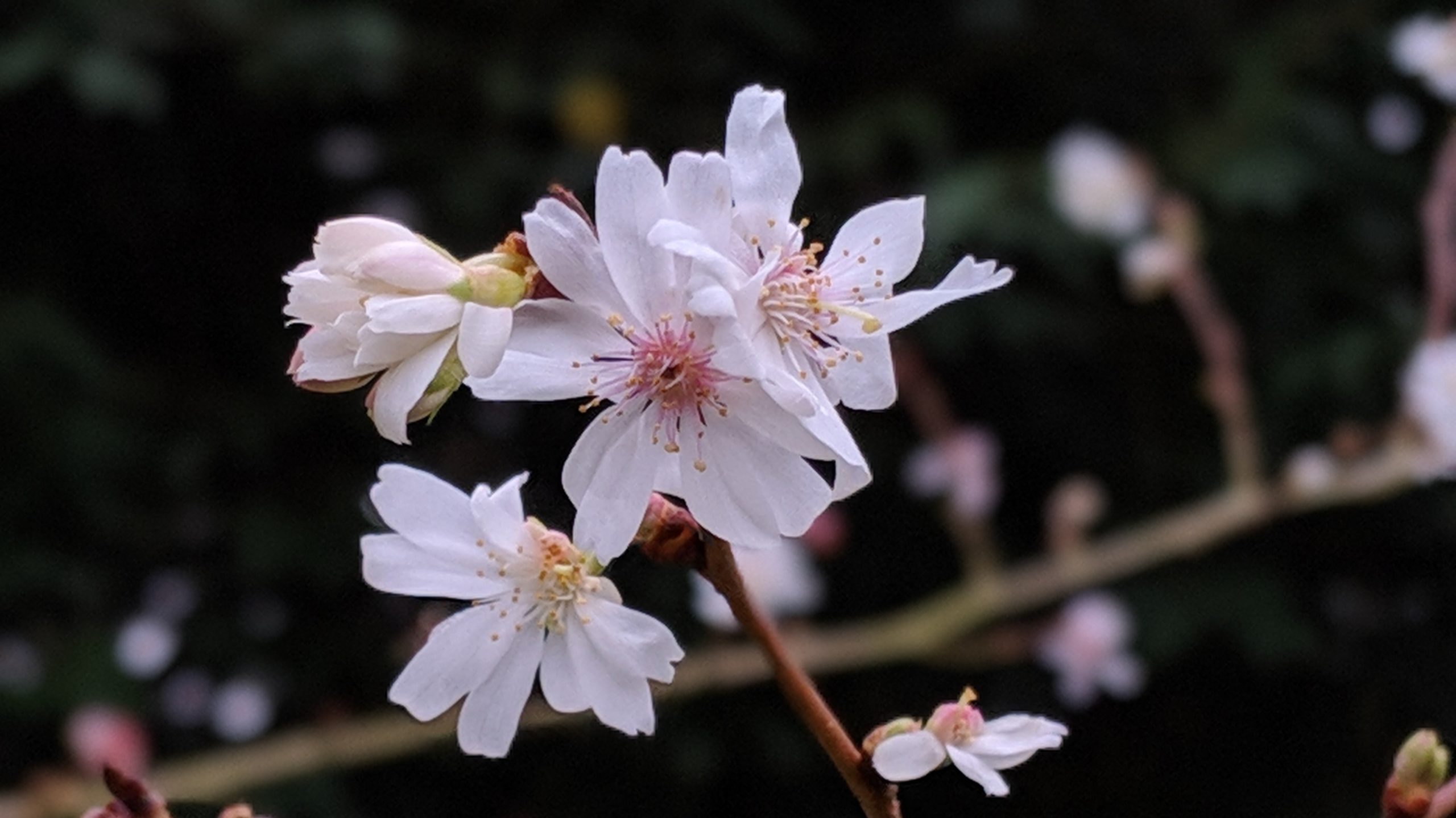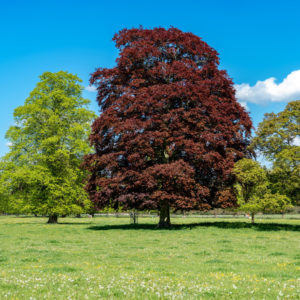Prunus x subhirtella Autumnalis Rosea / Winter Pink Cherry
Price range: €130.00 through €480.00
Frequently Bought Together



Description
Quick Facts
- Common Name: Autumn Cherry, Winter-Flowering Cherry, Rosebud Cherry
- Botanical Name: Prunus × subhirtella ‘Autumnalis Rosea’
- Plant Type: Deciduous tree
- Mature Height: 6-8m
- Mature Spread: 6-8m
- Flowering Period: November to April (intermittent)
- Flower Colour: Pale pink semi-double flowers
- Foliage: Oval serrated leaves, bronze emerging, turning green then orange-red in autumn
- Hardiness: RHS H6 (hardy)
- Soil Requirements: Moist, well-drained, tolerates most soil types
- Aspect: Full sun to partial shade
- Maintenance: Low
Description
Experience the extraordinary beauty of Prunus × subhirtella ‘Autumnalis Rosea’, one of the most magical and unique flowering cherries, bringing precious colour and joy during the darkest months with its remarkable ability to bloom intermittently throughout winter. This outstanding ornamental cherry offers exceptional year-round interest—delicate pale pink semi-double flowers that appear in flushes from autumn through winter into early spring, creating enchanting displays when little else is flowering, bronze-tinted emerging foliage in spring, reliable orange-red autumn colour, and a naturally elegant rounded form that provides graceful presence throughout all seasons, making this one of the most treasured and valuable trees for bringing life to winter gardens.
From late autumn through winter and into early spring, this captivating tree produces successive flushes of delicate semi-double flowers in soft pale pink, each bloom measuring 2-3cm across and appearing in small clusters along the bare branches. The flowering is most prolific during mild spells, with the heaviest displays typically occurring in November and again in March-April, though scattered blooms appear throughout winter whenever temperatures allow. The sight of pale pink blossoms against winter skies or dusted with frost creates moments of extraordinary beauty and hope during the quietest season. In spring, bronze-tinted young leaves emerge, maturing to fresh green with finely serrated edges and providing elegant presence throughout summer. As autumn arrives, the foliage transforms into warm shades of orange, red, and bronze, creating a beautiful finale before the winter flowering begins anew.
This remarkable cultivar is a hybrid of Japanese origin, with ‘Autumnalis Rosea’ selected specifically for its pink-tinted flowers and extended flowering period. The name ‘subhirtella’ refers to the slightly hairy undersides of the leaves, whilst ‘Autumnalis’ describes its autumn-to-spring flowering habit. Perfectly suited to Irish conditions, this cherry thrives in our temperate climate where mild winter spells encourage successive flowering displays, bringing precious colour when gardens need it most.
Create stunning compositions by planting where winter flowers can be appreciated from windows, pathways, or seating areas—near the house, beside entrances, or along frequently used paths. Magnificent as specimen trees in lawns, in mixed borders as focal points, or combined with other winter-interest plants like hellebores, snowdrops, and winter-flowering shrubs for extended seasonal displays. Works beautifully underplanted with early spring bulbs that bloom as the main flowering flush occurs in March-April.
Caragh Garden Notebook
Planting: Space trees 6-8m apart for groupings, or allow 8-10m for specimen placement. Plant bare-root trees from November to March, or container-grown specimens year-round (autumn or early spring is ideal). Dig holes twice the width of the root ball and incorporate organic matter. Plant at the same depth as the nursery soil mark, ensuring the graft union is above soil level. Stake for the first 2-3 years. Water thoroughly and mulch around the base.
Soil Preparation: Thrives in moist, well-drained soil with pH 6.0-7.5. Tolerates a wide range of soil types including clay and sandy loams. Prefers moisture-retentive conditions enriched with organic matter. Avoid waterlogged sites and very shallow chalky soils. Incorporate well-rotted compost or manure to improve soil structure. Best flowering occurs in full sun with good air circulation to reduce disease pressure and shelter from harsh winter winds that can damage flowers.
Container Growing: Suitable for large containers (minimum 60-80cm diameter) using soil-based compost. The moderate size makes this feasible for long-term container growing with proper care. Water regularly during growing season, especially when in flower. Feed in spring with slow-release balanced fertiliser. Repot every 2-3 years or top-dress with fresh compost. Position containers where winter flowers can be appreciated from indoors.
Seasonal Care: Requires minimal pruning—flowering cherries naturally develop graceful forms without intervention. Remove only dead, damaged, or crossing branches immediately after the main spring flowering flush in April-May, as pruning at other times increases disease risk. Never prune in autumn or winter. Apply slow-release balanced fertiliser in early spring. Mulch annually with organic matter to retain moisture. Water during prolonged dry spells, especially in the first 2-3 years and during bud development. Avoid disturbing the tree during winter flowering.
Propagation: Propagate by grafting or budding onto Prunus rootstock in late winter or summer (specialist technique requiring expertise). Cuttings are extremely difficult and unreliable. Seed-grown plants will not come true to type and will not display the characteristic pale pink semi-double flowers or extended winter flowering habit. Most gardeners prefer to purchase nursery-grown grafted specimens for guaranteed quality, true-to-type characteristics, and reliable winter flowering.
This winter-flowering treasure is absolutely magical—those delicate pale pink blossoms appearing throughout the darkest months bring such joy and hope to your garden! The intermittent flowering from November through to April means you get precious colour when you need it most. Plus you get lovely autumn colour too. Perfect for planting where you can appreciate those enchanting winter blooms from your windows. Pure magic!






